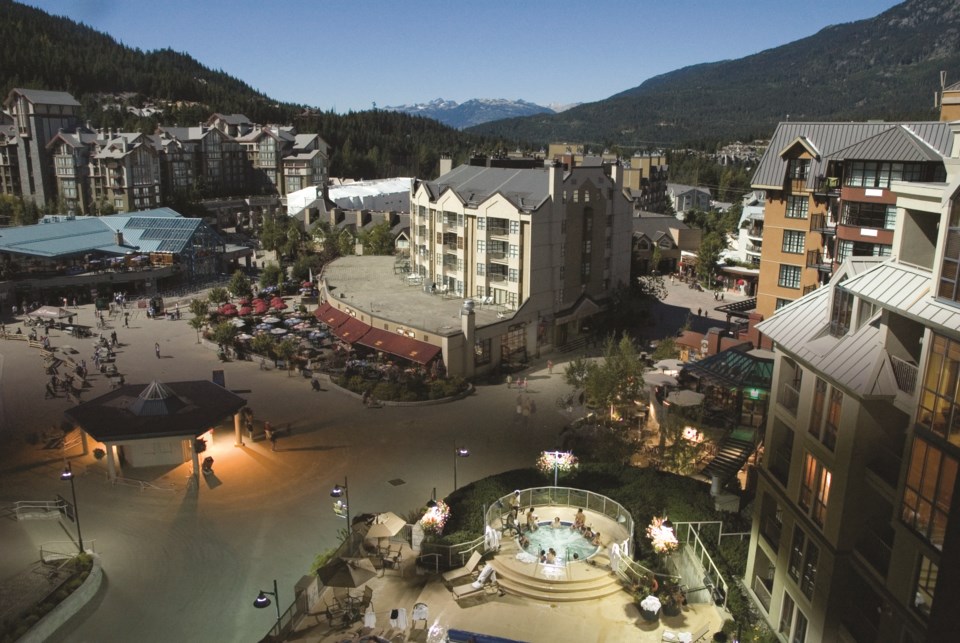The Resort Municipality of Whistler's (RMOW) Q1 financials, presented to Whistler's mayor and council on June 21, show a community rapidly emerging from COVID-19, as increased visitation and construction in the resort are helping to boost revenues at municipal hall.
In a presentation to Whistler council on June 21, RMOW director of finance Carlee Price shared details on the municipality's finances as of March 31, 2022.
“We did continue to see signs of post-pandemic financial stabilization in the first quarter," Price said.
"We first noted these in the fourth quarter of 2021 and, at that time, described it sort of as a 'fits-and-starts' type of progress."
Revenue in the first quarter of 2022 was at eight per cent and expenditures 23 per cent of full-year budgeted amounts, compared to six per cent and 25 per cent, respectively, at the same point in 2021.
Revenue from both the Resort Municipality Initiative program and the Municipal and Regional District Tax (MRDT, also known as the hotel tax) was up in the first quarter. Together they amounted to $2,428,388, up from the $236,867 brought in the first quarter of 2021—a 925-per-cent increase.
“Things certainly became clearer in the first quarter, most clearly indicated by the MRDT revenues, which not only surpassed 2020 levels but nearly approached 2019 levels, within two per cent," Price said.
"So visitors are certainly returning to the community."
MRDT revenue has the clearest relationship with visitation among the RMOW’s finances, and can be a "useful recovery indicator," Price said in her report to council. "Barring any reintroduction of travel restrictions or meaningful changes in the economy, the recovery in tourism revenues can fairly be expected to continue through 2022."
One trend noted in the report was the increasing number of day-trippers to the resort compared to overnight visitors. As such, parking revenues were up in Q1 2022. Hotels have also experienced a rebound, but it was noted that overnight visitation is still lagging behind pre-pandemic levels.
“So MRDT is clearly headed up again, reflecting that return to the overnight visitor, but is about eight months behind where parking began to return,” said Price.
Construction and renovation activity remained strong through the first quarter, with an increasing number of renovations and construction projects beginning in the municipality. Permitting and fees brought in $1,890,264 in Q1 of 2022, keeping pace with the $1,866,017 in 2021.
“Permits and works and services revenues have continued to be strong," Price said.
"You're seeing some supplier constraints (with) material and labour that affects the output of that work, but still, fairly an area of encouraging positivity for the RMOW."
The number of building projects that have been completed this year only amounts to 2.9 per cent of those that were granted permits—a reflection of the extensive planning work that tends to happen in the first quarter.
Grant funding was also up in Q1, with the RMOW bringing in $298,543 compared to $41,684 in 2021.
While there were increases in revenue in the first quarter, there were also some notable dips.
Revenue from transit was down due to the bus strike that lasted throughout the first quarter. The strike ended at the beginning of June, and bus fares have been lifted for the summer to encourage transit ridership to return.
“The bad news, of course, in the first quarter, was that the visitation to the Meadow Park facility was also affected by transit ridership because of the transit strike. Buses tend to bring quite a few people to that facility. So maybe not the same degree of recovery in those revenues as is evident elsewhere in the community,” said Price.
Programs and admission fees brought in $583,963 compared to $434,142 in 2021, while transit fares, leases and rent brought in $638,825, down from $737,684. The other revenue source that was down substantially was the municipality's investment revenue, which was down from $402,540 in Q1 2021 to $195,417 in 2022.
You can find the full report here.




